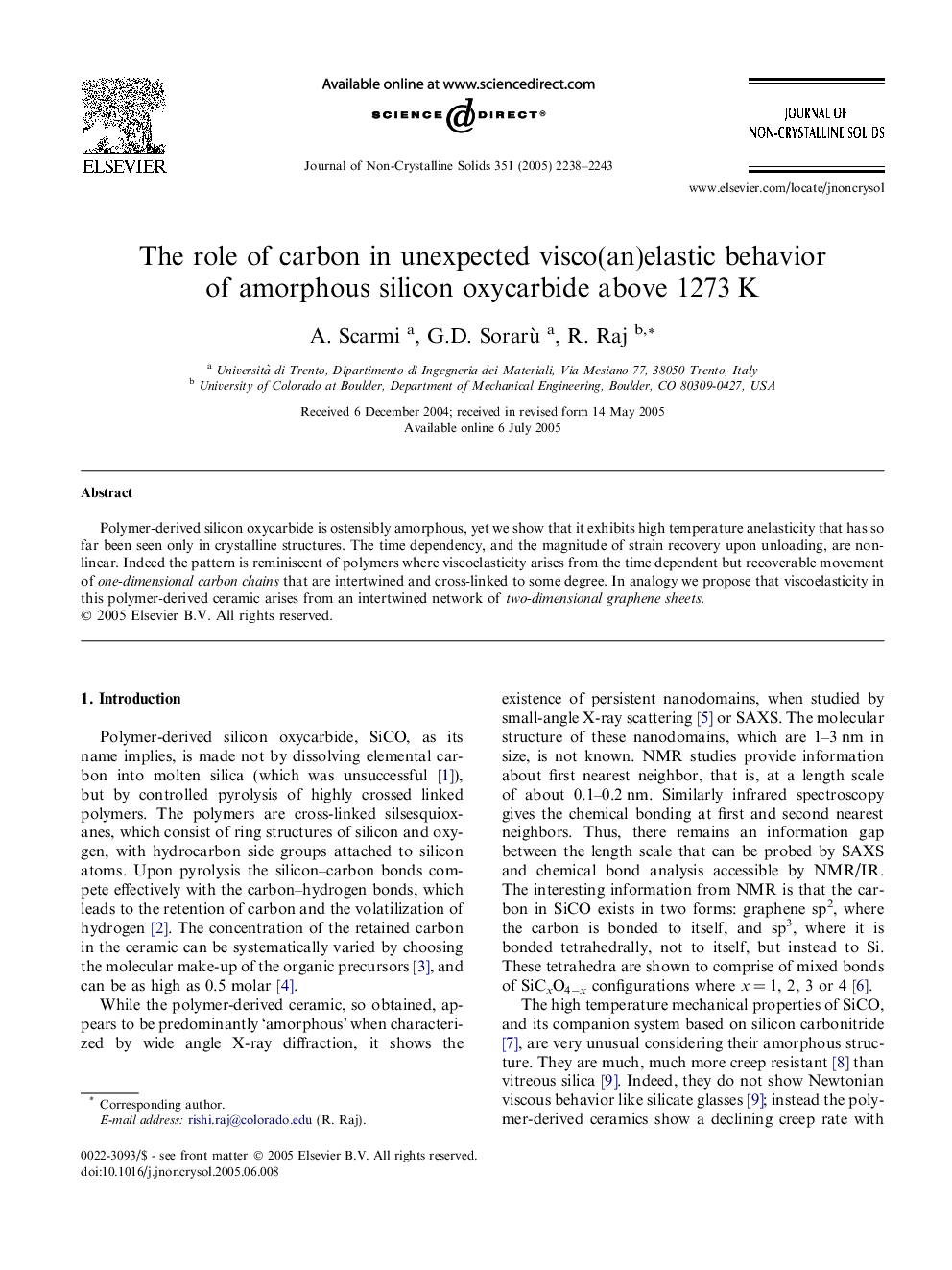| Article ID | Journal | Published Year | Pages | File Type |
|---|---|---|---|---|
| 1484385 | Journal of Non-Crystalline Solids | 2005 | 6 Pages |
Abstract
Polymer-derived silicon oxycarbide is ostensibly amorphous, yet we show that it exhibits high temperature anelasticity that has so far been seen only in crystalline structures. The time dependency, and the magnitude of strain recovery upon unloading, are non-linear. Indeed the pattern is reminiscent of polymers where viscoelasticity arises from the time dependent but recoverable movement of one-dimensional carbon chains that are intertwined and cross-linked to some degree. In analogy we propose that viscoelasticity in this polymer-derived ceramic arises from an intertwined network of two-dimensional graphene sheets.
Related Topics
Physical Sciences and Engineering
Materials Science
Ceramics and Composites
Authors
A. Scarmi, G.D. Sorarù, R. Raj,
